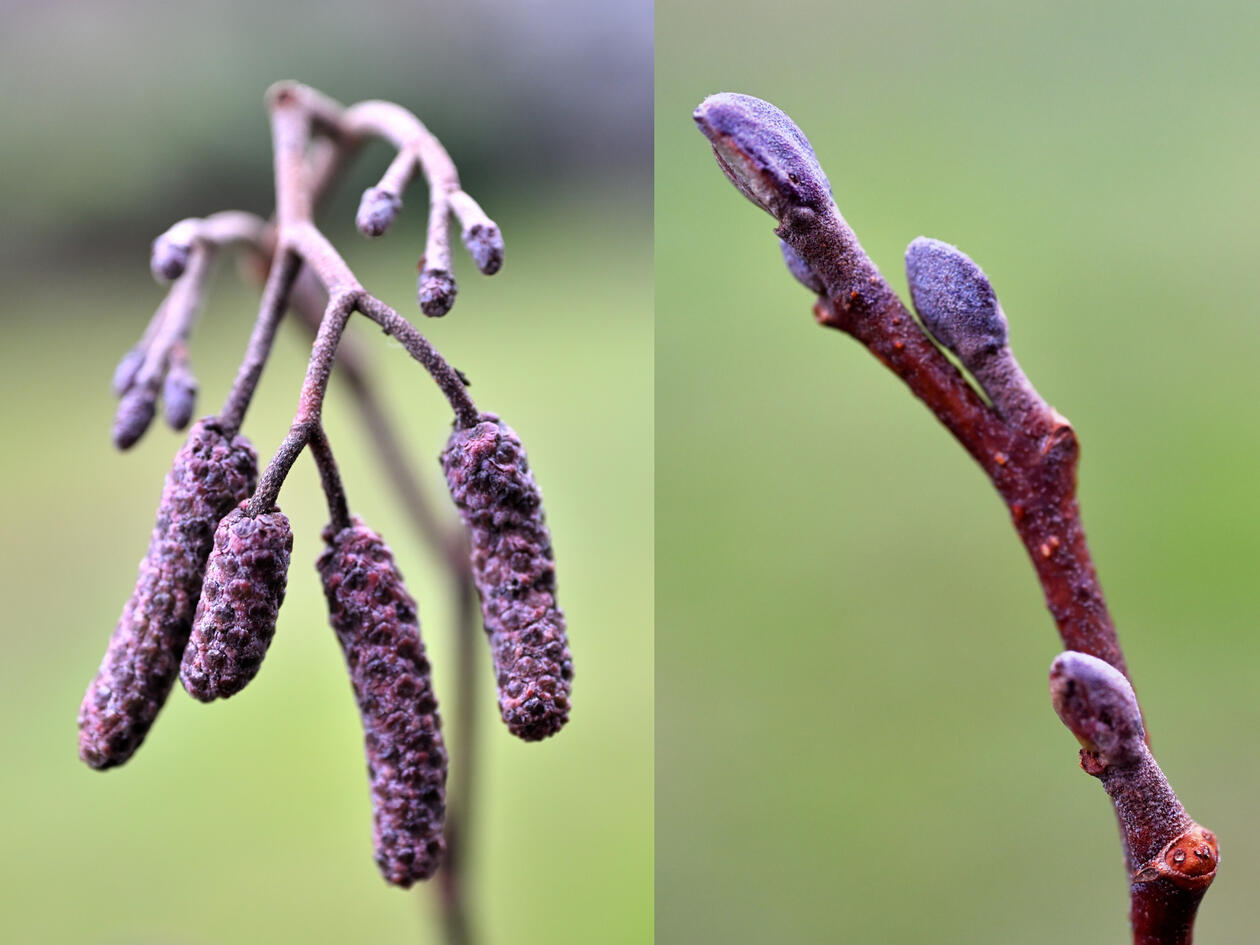Trees in winter mode
Identify tree species in winter from the buds and catkins that they developed last year in preparation for spring

Main content
The first trees with mature catkins are alder and hazel. Their pollen is released early, already in February in mild winters. Now, in the middle of January, we can see lots of male catkins on both of these species. Common alder (Alnus glutinosa) is part of the native vegetation at Milde, while grey alder (A. incana) can be seen in the Norwegian trees collection.
On the twigs of alder we find two types of catkins on the ends of the twigs. The male catkins are about 3 cm long, and the female ones up to 0.5 cm long. It is only on common alder that we can see the female catkins throughout the winter. Common alder can also be recognised by its somewht sticky annual shoots. In grey alder, both the leaf buds and annual shoots are hairy. In common alder the leaf bud has a relatively long stem, while in grey alder the stem is short. With these characters it is possible to distinguish the two alder species in winter.
Hazel (Corylus avellana) has brown annual shoots that are hairy. The male catkins are seen throughout the winter, while the female ones do not appear until flowering begins in early spring. The leaf buds are oval, rounded and slightly asymmetrical with several oblique hairy-margined bud scales. The colour can vary from green to reddish as in the main photo above.
Sycamore (Acer pseudoplatanus) has large green buds that are easy to recognize. The bud scales have small fine hairs on the edge, but otherwise they are smooth. Below the terminal bud there are two small side buds. When the side buds sprout, leaf pairs form on the twig, and the sycamore therefore has an opposite leaf position.
The botany of trees in winter is the theme for a guided tour in the Arboretum to be held on Sunday the 13th of March.

